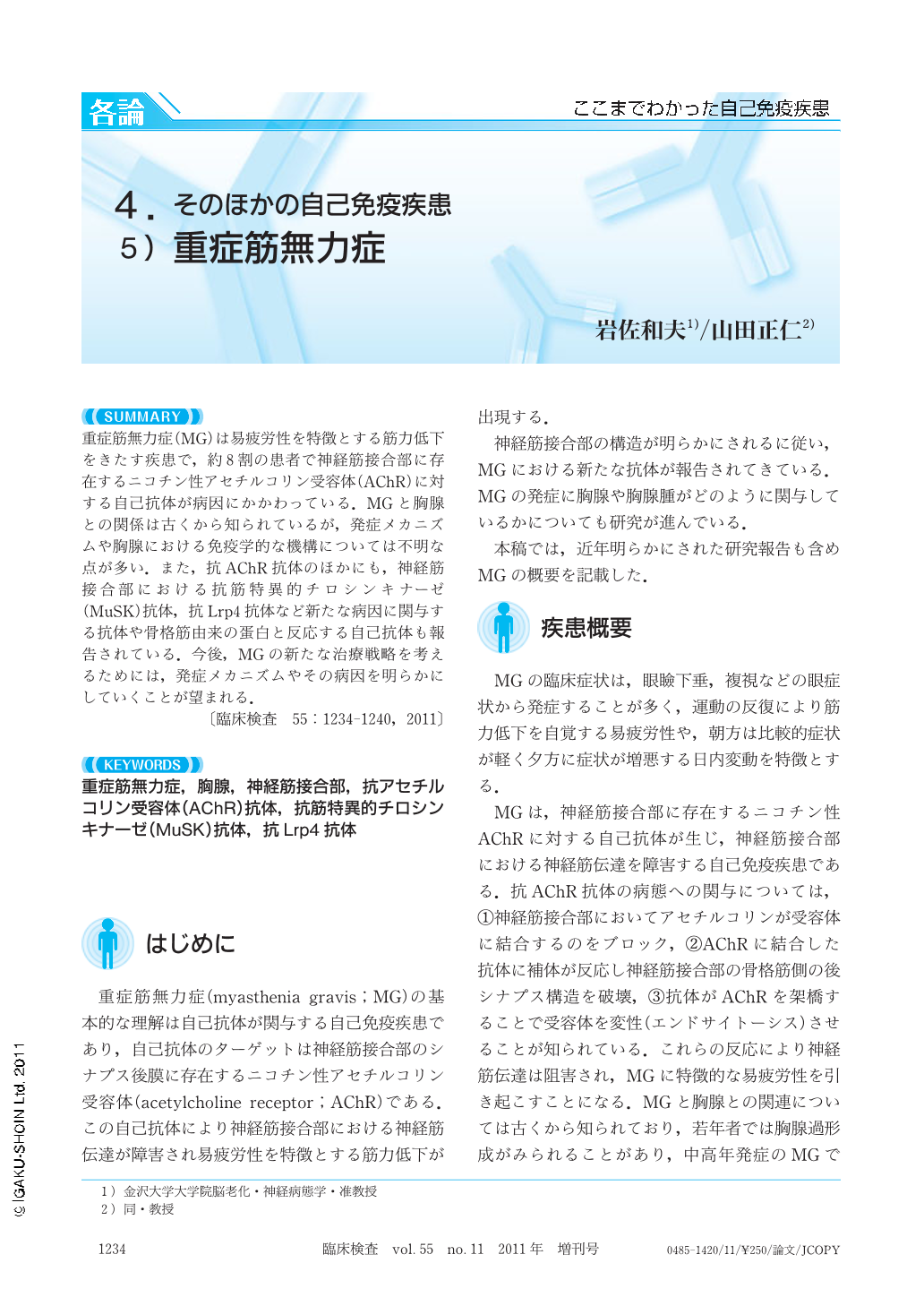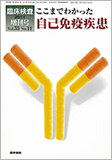Japanese
English
- 有料閲覧
- Abstract 文献概要
- 1ページ目 Look Inside
- 参考文献 Reference
重症筋無力症(MG)は易疲労性を特徴とする筋力低下をきたす疾患で,約8割の患者で神経筋接合部に存在するニコチン性アセチルコリン受容体(AChR)に対する自己抗体が病因にかかわっている.MGと胸腺との関係は古くから知られているが,発症メカニズムや胸腺における免疫学的な機構については不明な点が多い.また,抗AChR抗体のほかにも,神経筋接合部における抗筋特異的チロシンキナーゼ(MuSK)抗体,抗Lrp4抗体など新たな病因に関与する抗体や骨格筋由来の蛋白と反応する自己抗体も報告されている.今後,MGの新たな治療戦略を考えるためには,発症メカニズムやその病因を明らかにしていくことが望まれる.
Myasthenia gravis (MG) is an autoimmune disease associated with the anti-acetylcholine receptor (AChR) antibodies and nearly 80% of patients have these autoantibodies. In MG, thymus and thymoma play important roles in central tolerance and result in autoimmunity. Muscle specific receptor tyrosine kinase (MuSK) and low-density lipoprotein receptor-related 4 protein (Lrp4) are necessary components of the cluster of AChR on the neuromuscular junction. In MG, there are the antibodies against MuSK and Lrp4, and these antibodies and AChR antibodies are definitely pathogenic. To develop new therapies for MG, we have to carry out the continued research for the mechanism and pathogenesis of the disease.

Copyright © 2011, Igaku-Shoin Ltd. All rights reserved.


